A Joule Thief Flasher from "Watson"
I am a fan of "Rusty Bolt", AKA "Watson A. Name", also AKA "Acme Fixer", who has been somewhat diligent in spelunking the Joule Thief space of Electrical Engineering which I have also studied somewhat. Watson made a circuit, a Joule Thief modification, which should do exactly what you want, and I present it here.
Here is a partial screen shot of the page, which tells you where to add the CdS photocell (under "Daylight Shutoff" - across the emitter-to-base of Q3):
The Circuit
Here is the circuit itself:
My Verification
What now follows is my verification of the circuit in the very good free simulator LTSpice XVII, and the code itself for you to play with it:
Flash Close-up
a zoom-in on one of the "flashes":
Measurement
and a measurement of the current going through the LED at the time of the flash (about 36mA):
The Code (LTSpice file):
You can also take this "LTSpice code" and paste it into an "*.asc" file, perhaps named something like "Watsons Blue Blinky.asc" on a Windows machine, in the LTSpice directory. Then you can open it and play with it there. Enjoy! (and if you meet Watson, please thank him for me! ;-)
Version 4
SHEET 1 952 680
WIRE -544 -192 -624 -192
WIRE -496 -192 -544 -192
WIRE -384 -192 -416 -192
WIRE -144 -192 -384 -192
WIRE 272 -192 -144 -192
WIRE -544 -160 -544 -192
WIRE -384 -160 -384 -192
WIRE -144 -160 -144 -192
WIRE -224 -112 -256 -112
WIRE -208 -112 -224 -112
WIRE 160 -112 32 -112
WIRE -544 -80 -544 -96
WIRE 160 -80 160 -112
WIRE 272 -80 272 -192
WIRE -384 -48 -384 -80
WIRE -256 -32 -256 -112
WIRE -624 32 -624 -192
WIRE -144 32 -144 -64
WIRE -32 32 -144 32
WIRE 32 32 32 -112
WIRE 32 32 -32 32
WIRE -32 64 -32 32
WIRE 272 64 272 0
WIRE 432 64 272 64
WIRE -384 80 -384 32
WIRE -384 80 -496 80
WIRE 160 80 160 0
WIRE 432 80 432 64
WIRE -256 128 -256 48
WIRE -624 144 -624 112
WIRE -496 144 -496 80
WIRE 272 160 272 64
WIRE -384 176 -384 80
WIRE -336 176 -384 176
WIRE -320 176 -336 176
WIRE -144 192 -144 32
WIRE 160 208 160 160
WIRE 192 208 160 208
WIRE 208 208 192 208
WIRE -624 320 -624 224
WIRE -256 320 -256 224
WIRE -256 320 -624 320
WIRE -144 320 -144 272
WIRE -144 320 -256 320
WIRE -32 320 -32 128
WIRE -32 320 -144 320
WIRE 272 320 272 256
WIRE 272 320 -32 320
WIRE 432 320 432 144
WIRE 432 320 272 320
WIRE -624 352 -624 320
WIRE -496 352 -496 208
WIRE 32 352 32 32
WIRE 32 352 -496 352
FLAG -624 352 0
FLAG -544 -80 0
FLAG -336 176 Q2b
FLAG 192 208 Q1b
FLAG -224 -112 Q3b
SYMBOL ind2 256 -96 R0
SYMATTR InstName L1
SYMATTR Value 100µH
SYMATTR Type ind
SYMATTR SpiceLine Rser=0.001 Rpar=0 Cpar=0
SYMBOL voltage -624 128 R0
WINDOW 3 30 172 Left 2
WINDOW 123 0 0 Left 2
WINDOW 39 0 0 Left 2
WINDOW 0 -68 57 Left 2
SYMATTR Value PULSE(0 1.5 0 100n 900n 5)
SYMATTR InstName V1
SYMBOL npn 208 160 R0
WINDOW 0 52 30 Left 2
WINDOW 3 53 62 Left 2
SYMATTR InstName Q1
SYMATTR Value BC337-25
SYMBOL LED 416 80 R0
WINDOW 0 -11 -34 Left 2
WINDOW 3 42 211 VLeft 2
SYMATTR InstName LED1
SYMATTR Value NSSWS108T
SYMBOL cap -560 -160 R0
WINDOW 0 -39 31 Left 2
WINDOW 3 39 32 Left 2
SYMATTR InstName C1
SYMATTR Value 10µ
SYMATTR SpiceLine V=6.3 Irms=0 Rser=0.002 Lser=0 mfg="TDK" pn="C4532X5ROJ47@M" type="X5R"
SYMBOL res -608 128 R180
WINDOW 0 36 76 Left 2
WINDOW 3 36 40 Left 2
SYMATTR InstName SW1
SYMATTR Value 10m
SYMBOL res -400 -176 R0
SYMATTR InstName R2
SYMATTR Value 680K
SYMBOL res -400 -64 R0
SYMATTR InstName R3
SYMATTR Value 680K
SYMBOL npn -320 128 R0
WINDOW 0 56 26 Left 2
WINDOW 3 51 58 Left 2
SYMATTR InstName Q2
SYMATTR Value 2N3904
SYMBOL cap -512 144 R0
SYMATTR InstName C4
SYMATTR Value 1µF
SYMBOL res -272 -48 R0
SYMATTR InstName R4
SYMATTR Value 68K
SYMBOL pnp -208 -64 M180
WINDOW 0 52 62 Left 2
WINDOW 3 50 32 Left 2
SYMATTR InstName Q3
SYMATTR Value 2N3906
SYMBOL ind2 176 16 R180
WINDOW 0 36 80 Left 2
WINDOW 3 36 40 Left 2
SYMATTR InstName L2
SYMATTR Value 100µH
SYMATTR Type ind
SYMATTR SpiceLine Rser=0.001 Rpar=0 Cpar=0
SYMBOL res 144 64 R0
SYMATTR InstName R1
SYMATTR Value 1K
SYMBOL cap -16 64 M0
SYMATTR InstName C5
SYMATTR Value 10nF
SYMBOL res -160 176 R0
SYMATTR InstName R5
SYMATTR Value 3.3k
SYMBOL res -512 -176 R270
WINDOW 0 32 56 VTop 2
WINDOW 3 0 56 VBottom 2
SYMATTR InstName R6
SYMATTR Value 1m
TEXT 136 -216 Left 2 !K1 L1 L2 0.95
TEXT 72 344 Left 2 !.tran 0 4s 0 1u startup
TEXT 360 88 Left 2 ;Blue\nLED
TEXT -120 144 Left 2 ;0.01µF
TEXT -600 -280 Left 2 ;circuit Watson's Blue Blinky Joule Thief by Rusty Bolt, AKA Watson A. Name, \nAKA Acme Fixer, circuit source: https://rustybolt.info/wordpress/?p=152
Disclaimer
I have not yet built this (but I'm about to). If anybody builds this, please let us know! Thanks.
